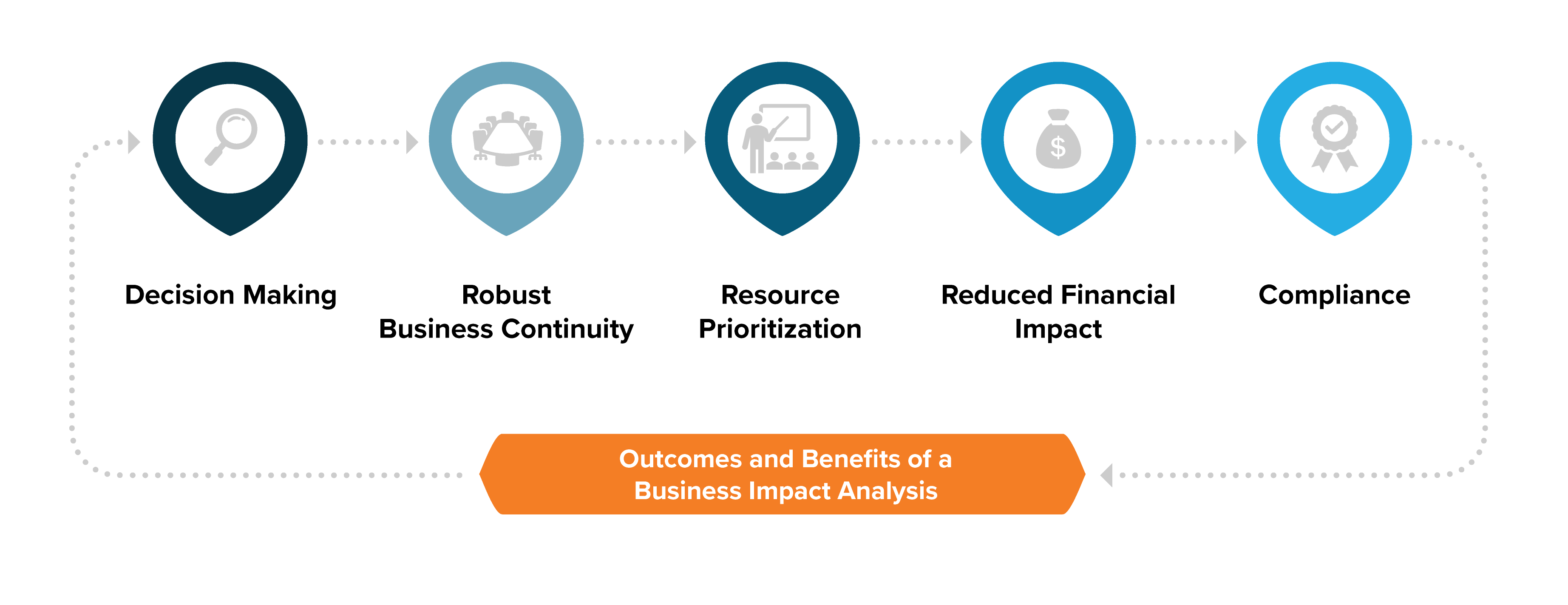
What is one thing that all organizations have in common? The potential for a disaster or disruption to strike at any time and without notice. Whether it’s from a cyberattack, technical failure, natural disaster, or some global-scale event (looking at you COVID), there is no shortage of potential events that can cause chaos for your organization. So how can you prepare and make these chaotic events more manageable? That’s where performing a Business Impact Analysis (BIA) comes in.
A BIA is a critical step that every organization can—and should—take when trying to establish or revamp Business Continuity and Disaster Recovery (BC/DR) programs. Going through the process of performing a BIA will enable organizations to understand their risks and vulnerabilities, make informed decisions on prioritization, and have the processes in place to recover quickly when the aforementioned doomsday chaos hits.
What is a Business Impact Analysis (BIA)?
A BIA is a process that helps organizations identify and assess critical business functions and the potential ramifications a disruption would have on these key operations. It’s a way to evaluate the consequences of a disaster and understand how to prioritize recovery efforts to minimize downtime and impact.
There are two main questions to answer when conducting a BIA:
- What are the most critical business functions you can’t afford to lose?
- How quickly would you need to have these critical functions back up and running if a disaster occurred?
What are the key factors to consider when performing a BIA?
- Identify Critical Business Functions
Every business has essential business functions, and identifying them is the first step in successfully completing the BIA. These could be anything from sales applications, customer service platforms, IT systems, manufacturing, etc. The key is to discover what is critical to keep the company operational. A few questions to consider when getting started:
- What are the primary revenue-generating systems, applications or processes?
- What systems are vital for day-to-day operations?
- What activities need to continue if a disaster or outage were to occur?
- Assess the Impact of a Potential Disruption
Now that you have identified the critical business functions, take it a step further and assess the potential impact of a disruption. This is where the impact on the organization becomes even clearer. There are both quantitative and qualitative factors that you will need to consider:
- Financial Impact: How much revenue is lost for every 1 hour or 24 hours of disruption?
- Operational Impact: What kind of delays would the disruption cause to production or supply chains?
- Reputational Impact: How would a significant disruption or outage hurt your brand or affect customer trust?
- Legal and Compliance Impact: Are there legal or compliance regulations you are required to maintain?
- Recovery Time Objectives (RTOs)
Now it’s time to define the RTOs for the functions that have been identified and assessed for impact. Simply put, the RTO is how long you can afford to go without that specific business function. For example:
- What is the maximum downtime for your order processing system you can afford before you start to lose customers?
- How long can the website be down before it starts to impact sales?
Having these RTOs established will further allow your organization to develop the appropriate recovery strategies and determine which systems need to be prioritized when it comes to restoration times.
- Understanding the Dependencies and Interdependencies
Most of the time business functions do not operate in a vacuum, there is a dependency on something else, whether that be a third-party service, another technology or employees. When you start to get to the point in the process where you are building recovery and restoration plans, understanding the interdependencies between all these systems is critical.
For example, if you rely on an identity provider (IdP) for single sign-on (SSO), what happens if there is an event that causes that service to be unavailable for a certain period of time? How is access to other applications affected? Are there alternative methods that need to be implemented, even if just temporary?
Outcomes and Benefits of a Business Impact Analysis
Now that we have some background on the key factors of performing a BIA, we can focus on the “why”—what is the benefit of performing all this work?

- Decision Making
A well-established BIA will provide leadership teams with the insight they need into the organization’s most critical assets and business functions. Once completed, the organization has the ammunition it needs to make the best decisions when it comes to allocating resources, and making sure that the best people, processes and technology are in place.
- Robust Business Continuity
The BIA will allow your organization to build out a robust and actionable Business Continuity Plan (BCP). Far too often BCPs are developed at a point in time, and if we’re lucky, get dusted off once a year for someone to take a scroll through to give it the thumbs up before the next annual review needs to take place. A BIA will help ensure that the BCP is accurate and provides the necessary outline for the organization to follow if a disruption occurred.
- Resource Prioritization
BC/DR planning can be a resource intensive process, and it’s important to make sure your organization is burning calories on the right priorities. With a BIA, you can make sure that the most mission critical operations are being prioritized so that time and money are not being wasted on non-essential functions.
- Reduced Financial Impact
Understanding the cost of downtime and implementing the appropriate preventive measures can provide enormous financial benefits in the long run. By knowing which systems and processes are vital to keep the organization running, you can better prepare for any potential disruptions and mitigate the financial impact.
- Compliance
Many industries require organizations to have a BCP in place. A BIA can help ensure that compliance requirements are being met, and that all potential risks and strategies to mitigate them have been developed.
How K logix Can Help
At K logix, we understand that conducting a successful Business Impact Analysis can be a huge lift for organizations, and knowing where to start can be challenging in itself. Our Cyber Risk Consulting team can help guide your organization through the Business Impact Analysis. Through our process, you will gain an in-depth understanding of your critical business functions, the risks surrounding them and begin to plan for how to mitigate those risks moving forward.